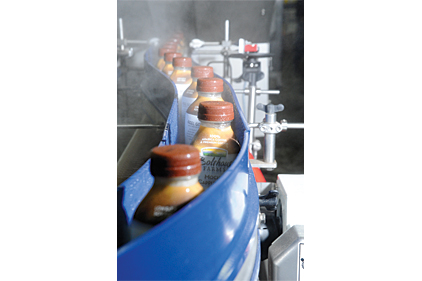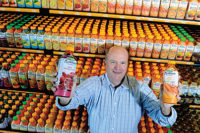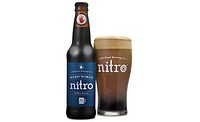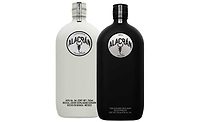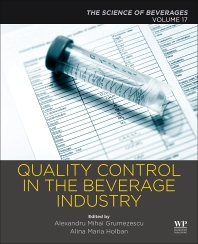Although Bolthouse Farms, Bakersfield, Calif., has been producing carrots since 1915, it first entered the beverage marketplace in 2003. Since those first introductions nine years ago, Bolthouse has challenged itself to inspire “the fresh revolution.”
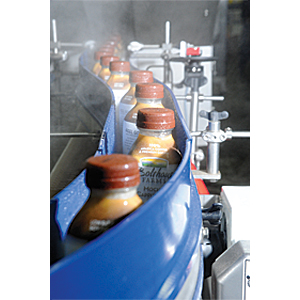
|
| Bolthouse’s 450-ml Mocha Cappuccino emerges from the steam tunnel wearing a shrink sleeve. The company can run its 450-ml bottles at speeds of 200 or 400 bottles a minute. |
Offering innovative, healthy food and beverages is how Bolthouse hopes to inspire “the fresh revolution,” says Jeff Dunn, president and chief executive officer of Bolthouse.
Recently purchased by Camden, N.J.-based Campbell Soup Co., Bolthouse manufactures all of its super-premium juices and smoothies out of its Bakersfield facility in addition to its other consumer packaged goods (CPG) businesses, namely carrots and salad dressings. Including its offices, warehouse, manufacturing plant and newly constructed innovation center, the Bakersfield location is approximately 1 square mile with 2,100 employees on-site.
A growing business, the company’s super-premium juices and smoothies now account for approximately 30 percent of the facility’s production, Dunn says.
Well-known for its CPG carrot production, Bolthouse implements the same care and quality with its beverages.
“What’s in [the] carrot juice has been picked within 24 hours, so it’s been harvested and [brought] into this plant within 24 hours,” says Todd Putman, chief marketing officer with Bolthouse.
Although Bolthouse grows its own carrots for its 100% Carrot juice as well as its juice blends, the company also sources other fruit and vegetable ingredients from around the world, says Mike Box, vice president of operations for CPG with Bolthouse. Those ingredients are kept in cold storage to ensure their quality.
Bolthouse also has three blending tanks that can batch up to 15,000 gallons each, Box says. He adds that it is not rare for the company to batch one flavor in 45,000 gallons. Once the flavor is batched, it is tested to ensure its quality taste and then is sent along for pasteurization, Box notes.
Just as critical as the quality ingredients it uses is the care that the company administers after production. Featuring cold-chain handling, Bolthouse refrigerates its manufacturing facility as well as its storage and distribution vehicles at 41 degrees Fahrenheit.
“I think that’s normal with any perishable; you have to keep it cold — if you want quality, you want to keep it in a cold-chain environment,” Box says. “That’s why, you see, it is cold in here; [when it] goes into the warehouse, it’s cold; into the truck, it’s cold … everything we do is cold-chain.”
The company also ensures that cold-chain handling is administered with its rail distribution, which is how Bolthouse ships its produce and beverages to its four Chicago distribution facilities.
“It’s called fresh logistics: Carrots, juice, all of our product that we make goes right out the line [and] goes right into a rail car [that] goes to Chicago,” Box says.
Bolthouse ships its products through rail because of the efficiencies that it offers from a food mile standpoint of being able to ship every day, Dunn notes.
And just like its Chicago distribution facilities, trucks that come to the warehouse to pick up produce also are loading beverages onto trucks for deliveries coming out of the Bakersfield facility.
Putman notes that these synergies between the carrot and beverage businesses can be beneficial to retailers as they get product to stores faster, which can result in less degradation, a longer shelf life and decreased shrink levels.
Just as Bolthouse has seen its SKUs grow throughout the years, its packaging options also continue to grow.
Currently, Bolthouse offers its beverages in three pack sizes: 450 ml, 32 ounce and 52 ounce. These larger package sizes have offered the company an opportunity to reach a larger segment base of consumers, Putman explains.
Featuring two beverage production lines, Bolthouse has the capability to fill 200 bottles a minute on one beverage line and 400 bottles a minute on the second beverage line, Box says. Both lines can do labels or sleeves, he adds. Thirty-two-ounce and 450-ml bottles have sleeves, and 52-ounce bottles have labels, he says.
In the last five months, Bolthouse upgraded its equipment to support its packaging and storage processes, he notes.
“We actually just put in an expansion project, which included more sleeving capacity and case-packing capacity and improvements to our batching and blending operations,” he says.
Since the first beverage production in 2003, Bolthouse has been blow molding its own beverage containers, Box notes.
Similar to the other quality-control measures that are a part of Bolthouse’s production process, the company enlists that same care for its package development.
“The bottles are filled in a sterile enclosure so everything in there is sterile,” Box says. “Everything comes in, it gets cleaned, it gets rinsed with sterile water, and it gets filled and capped so everything inside that closure is in a clean environment.” BI
